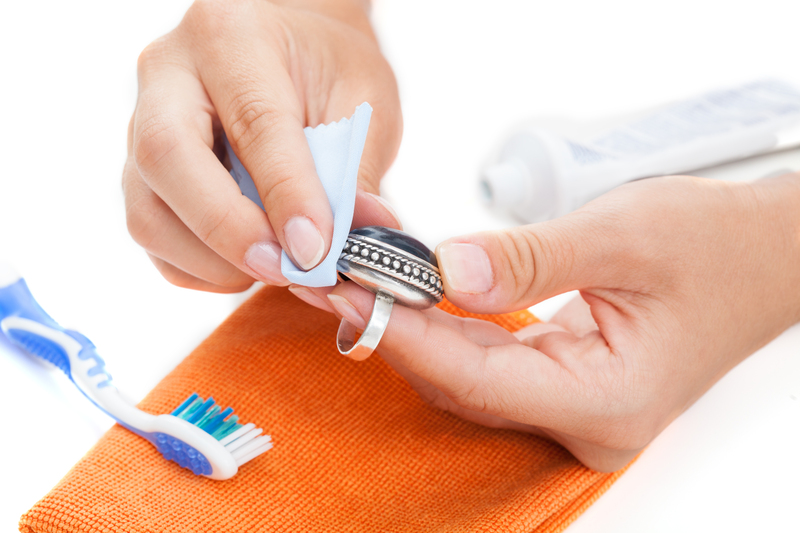Protect Your Bathroom from Mold with These Techniques
Posted on 15/06/2025
Protect Your Bathroom from Mold with These Techniques
Mold growth in the bathroom is a common issue faced by many homeowners. Due to high humidity, frequent water usage, and poor ventilation, bathrooms become prime environments for mold to take hold and spread. It's vital to protect your bathroom from mold not just for aesthetic reasons, but also to prevent potential health hazards and expensive repairs down the line. In this comprehensive guide, we'll explore effective methods and expert tips to keep your bathroom mold-free and healthy.
Understanding Why Mold Loves Bathrooms
Before delving into mold prevention techniques, it's essential to understand why bathrooms are so prone to mold. Mold is a type of fungi that thrives in warm, damp, and poorly lit environments. Bathrooms, given their constant exposure to water and humidity, provide the ideal habitat for mold spores to settle and multiply.
- Moisture: The primary ingredient for mold growth is moisture, which is abundant from showers, baths, and sinks.
- Poor ventilation: Insufficient airflow traps humid air, providing a sustained environment for mold to flourish.
- Organic materials: Grout, drywall, wood, and even soap scum can serve as food sources for mold.

Top Techniques to Prevent Mold in Your Bathroom
Now that you know why bathrooms are mold hotspots, let's look at effective strategies to protect your bathroom from mold.
1. Improve Ventilation
One of the most effective ways to prevent bathroom mold is to increase air circulation and decrease humidity levels.
- Install or upgrade an exhaust fan: An exhaust fan removes moist air from the bathroom. Make sure it is powerful enough for your bathroom size and run it during and after showers for at least 20 minutes.
- Open windows and doors: When possible, keep windows slightly open during or after bathing to allow fresh air in. Even keeping the bathroom door open can help moisture escape.
- Use a dehumidifier: If your bathroom is especially prone to moisture, consider adding a portable dehumidifier to keep humidity below 50%.
2. Wipe Down Surfaces Regularly
Moist surfaces are breeding grounds for mold. After each shower or bath, make it a habit to dry the walls, tub, and other wet areas with a squeegee or towel. Don't forget to wipe:
- Shower doors and curtains
- Tiles and grout lines
- Sink countertops
- Behind the toilet and under the sink
Regularly cleaning surfaces helps to protect your bathroom from mold growth.
3. Fix Leaks Immediately
Ongoing leaks from faucets, pipes, or toilets provide a continuous water source for mold. Inspect your bathroom regularly for:
- Dripping faucets
- Running toilets
- Pooled water under sinks
- Damp cabinets or floors
If you notice any leaks, fix them as soon as possible to prevent excess moisture accumulation.
4. Use Mold-Resistant Materials
When renovating or repairing your bathroom, choose materials designed to withstand mold and moisture. Recommended options include:
- Mold-resistant drywall (greenboard or cement board)
- Waterproof paint or sealant on walls and ceilings
- Epoxy grout instead of regular grout between tiles
- Vinyl, porcelain, or ceramic flooring
These upgrades will provide extra protection for your bathroom and significantly reduce mold risks.
5. Deep Clean Regularly with Mold-Killing Solutions
Regular cleaning is key to mold prevention in bathrooms. Use cleaning solutions that kill mold spores, such as:
- A mixture of white vinegar and water
- Baking soda and water paste for scrubbing
- Commercial anti-fungal cleaners
Focus especially on grout lines, shower tracks, caulking, and corners where mold tends to hide.
6. Replace or Wash Shower Curtains and Liners
Shower curtains, especially fabric liners, can develop mold quickly if left damp.
- Choose machine-washable liners and curtains
- Wash regularly with hot water and vinegar
- Hang them so they fully dry between uses
Prevent bathroom mold by ensuring soft surfaces are clean and dry.
7. Seal Grout and Caulk Joints
Cracked grout and old caulking are prime spots for hidden mold growth. Seal tile grout and replace old caulk every year or as needed. Use mildew-resistant caulk for best results, and always allow joints to dry fully before applying new material.
Recognizing the Early Signs of Mold in Your Bathroom
Detecting mold early allows you to address the issue before it becomes a severe problem. Watch for these warning signs:
- Musty or earthy odors
- Discoloration on walls, ceilings, or tiles (especially black, green, or orange spots)
- Peeling paint or wallpaper
- Persistent condensation on mirrors or windows
If you find any of these signs, act promptly to clean and inspect the area, and determine if mold has spread behind surfaces.
Why It's Important to Stop Bathroom Mold
Bathroom mold is more than just an unsightly nuisance. It can also pose health risks, such as:
- Allergic reactions (sneezing, runny nose, itchy eyes)
- Exacerbation of asthma or respiratory problems
- Long-term exposure can lead to chronic health issues
Furthermore, mold can damage walls, floors, and fixtures, leading to expensive repairs and renovations.
Frequently Asked Questions about Bathroom Mold Prevention
How often should I clean my bathroom to prevent mold?
For best results, do a quick surface clean every couple of days, wipe down wet areas after each use, and deep clean weekly with mold-killing solutions.
What is the best cleaner to remove mold?
White vinegar is a popular natural mold killer. You can also use diluted bleach or a commercial antifungal cleaner. Always follow product instructions and ventilate the area during cleaning.
Are there long-term solutions to protect my bathroom from mold?
Yes. Investing in proper ventilation systems, using mold-resistant materials, and maintaining regular cleaning routines are proven, long-term methods to keep your bathroom free of mold.
Can mold grow behind tiles or walls?
Absolutely. If water seeps behind walls or tiles due to leaks or damaged grouting, mold can grow out of sight. That's why routine inspection and prompt repairs are essential for bathroom mold prevention.

Extra Tips to Keep Your Bathroom Mold-Free
- Keep personal items to a minimum: Clutter can trap moisture and hide mold, so store items elsewhere when possible.
- Use a mold-prevention shower spray: Spraying after every shower can slow down mold growth on tiles and grout.
- Leave shower doors/curtains open after use: This speeds up drying time and discourages mold.
- Install moisture-resistant lighting: Using LED lights that are safe for damp environments can reduce condensation.
- Maintain bathroom plants: If you keep plants in your bathroom, ensure they do not contribute to excess humidity.
Summary: Take Charge and Protect Your Bathroom from Mold
Taking proactive steps to prevent mold in your bathroom is crucial for the health and longevity of your home. By improving ventilation, keeping surfaces dry, using mold-resistant materials, and staying vigilant with cleaning, you can effectively protect your bathroom from mold before it becomes a major intrusion.
Remember, consistency is key. Making these prevention techniques a regular part of your home routine will save you time, money, and hassle in the future. If you ever face severe mold problems, don't hesitate to call a professional, as advanced infestations may require special remediation.
With these techniques, you're well-equipped to maintain a clean, healthy, and mold-free bathroom for years to come!




